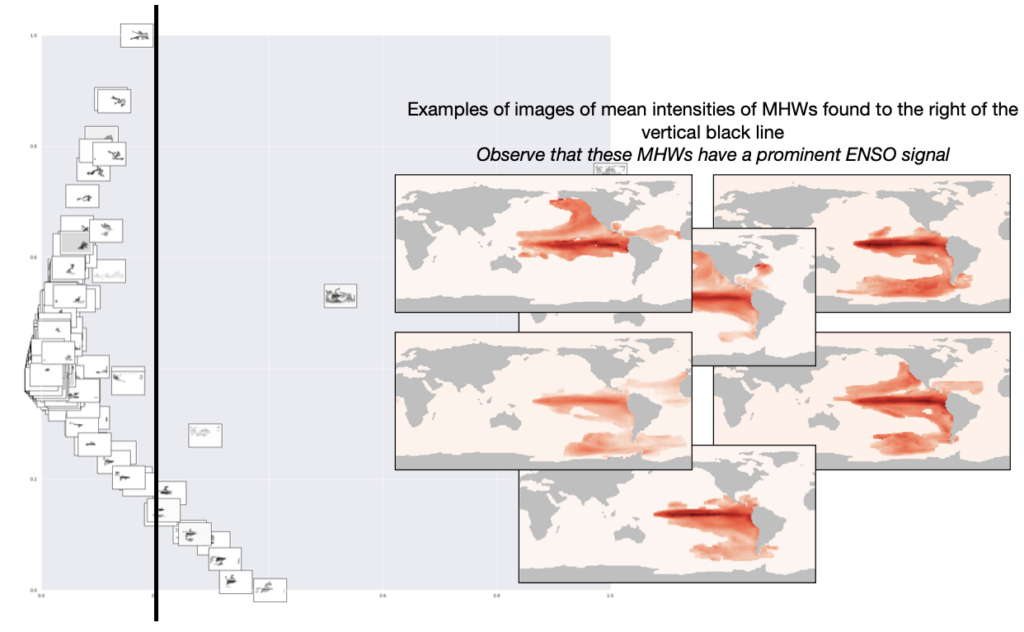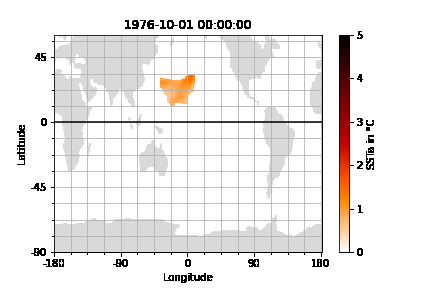Project Lead: Cassia Cai, UW Oceanography
Faculty Advisor: LuAnn Thompson, UW Oceanography
Data Science Lead: Valentina Staneva
Marine heatwaves (MHWs) are defined as discrete periods when local sea surface temperatures (SST) exceed a temperature threshold (e.g., a seasonally varying temperature threshold). A number of high-profile MHWs, such as the Great Barrier Reef 2002, Mediterranean Sea 2003 and 2006, Tasman Sea 2015, Northwest Atlantic 2012, and Northeast Pacific 2013-2015, have occurred in the last two decades. MHWs occur globally. MHWs can be caused by a combination of local, regional, and/or large-scale drivers. Specifically, MHWs can be (1) forced locally through processes affecting the mixed layer temperature budget, (2) modulated by regional or remote sources and climate modes, and (3) modulated by atmospheric and/or oceanic teleconnections. MHW spatial connectivity and temporal behavior can thus have different characteristics in different areas of the ocean. MHWs can have significant ecological and socio-economic impacts, such as leading to algal blooms, habitat degradation, and loss in commercially valuable fisheries.

As a result of the Incubator, we provide an extension to the morphological object tracking package Ocetrac to objectively characterize the spatiotemporal evolution of MHWs by calculating measures of these multi-dimensional sea surface temperature anomaly objects. We used sea surface temperature fields in CESM Large Ensemble climate model projections. We extracted features from our tracked blobby objects, calculated three types of measures, and then tested several different methods for converting these into a meaningful set of clusters and visualizing them.
Classifying and finding patterns in the spatiotemporal evolution of these moving SST clusters can fill multiple knowledge gaps, such as our understanding of key MHW characteristics like distribution, variability, and trends, and the physical mechanisms that cause MHWs in different parts of the ocean. We generate statistics from our MHW groups, which will allow us to examine the global and regional scale drivers of MHWs. This allows this analysis to be replicated for (1) different regions and (2) using different datasets. Scientifically, this project will add merit to the field by allowing us to (1) assess the possible physical processes causing MHWs, (2) define the statistical properties of MHWs, and (3) characterize the spatiotemporal evolution of connected MHWs.

